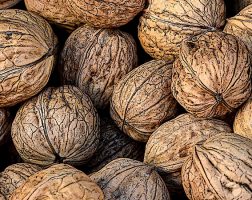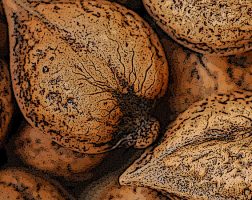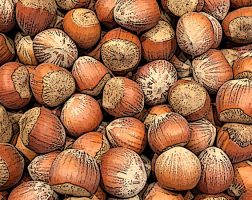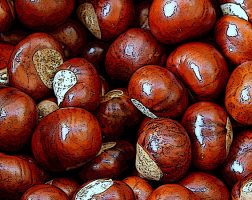Nuts
Iowa nut production has taken a back seat to China, the Middle East and the West Coast, but that is quickly changing. Chestnuts, in particular, are making a comeback and research and breeding work with hazelnuts are making them a viable option. Most nuts trees and bushes fit well into a larger system of animal and fruit production or simply a sustainable, soil-retaining back yard. Primary labor considerations are harvesting and processing. Many nuts do well in cold storage, potentially extending the sales season for farmers who grow fruits and vegetables. The trees have the potential to be harvested for lumber at the end of their production life.
Common Threat
Weed control during establishment.
Best Management
While trees are young, heavy and wide mulching or a synthetic weed killer like Oust. This will not be unnecessary once the canopy is well-developed.
Common Capital Expense
High upfront planting and weed control, dropping off as the plants grow older.
Common Labor Expenses
Seedlings and tree protection.
Landowners Lessons

TOM WAHL AND KATHY DICE
We met at Iowa State University where we both earned degrees in Fisheries and Wildlife Biology. To get our start in this business, we went on a journey of purchasing land and envisioning the future for that land, which needed to include protection for wildlife and the environment.
Our “aha” moment was when we were thinking of our little bit
of wilderness and how we could be good stewards of the land, and maybe make a living off of the land too. We wanted to put permanent ground cover in place, but put in a species that provides income as well.
After realizing the intense upkeep chestnut trees require — due to invasive species and the lack of protection for the trees — we were thrilled when a neighbor offered to sell us land containing established fruit and nut trees.
In 2000, a neighbor offered to sell us land planted to non-producing chestnut trees. We purchased the land and began maintenance on the trees. We also planted other nut and fruit trees among them. Thus started the journey to our current operation. We’ve tried growing every edible perennial possible in our zone. Some of the most successful ones include persimmons, chestnuts, pawpaws and heartnuts. We have tried mulberries, Aronia and hazelnuts, but found them not commercially successful.
Soil health on our land is important. We make certain there is ground cover underneath all of their trees so the soil does not erode during rain events…and avoid monocultures by planting a diversity of species, which improves the health of organisms in the soil, as well as the soil itself.
We are proud of our work and the fact that we are sustaining a living off of this land.
Based on an article originally published by Center for Rural Affairs https://www.cfra.org/




